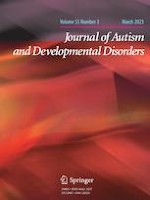Gepubliceerd in:

15-12-2022 | Letter to the Editor
Case Report: X-Linked Creatine Transporter Deficiency in Two Saudi Brothers with Autism
Auteurs:
Mohammed Almatrafi, Zehour Al-Sabban, Soher Balkhy, Iman Sabri Abumansour
Gepubliceerd in:
Journal of Autism and Developmental Disorders
|
Uitgave 3/2023
Log in om toegang te krijgen
Excerpt
X-linked creatine transporter deficiency (CTD) was first described in 2001 (Cecil et al.,
2001; Salomons et al.,
2001). Its reported prevalence is approximately 2% in males with X-linked intellectual disabilities and ranges from 0.4 to 1.4% in males with intellectual disability/autism overall (Newmeyer et al.,
2007; Van de Kamp et al.,
2014). A previous genotype phenotype correlation study of CTD revealed that all affected males have an intellectual disability together with delayed speech development of variable severity (Van de Kamp et al.,
2013). Other frequent clinical features include neurobehavioral disorders such as attention deficit/hyperactivity disorder (ADHD), autism spectrum disorder (ASD), seizures, hypotonia, spasticity, and dystonia. Gastrointestinal symptoms such as neonatal feeding difficulties, failure to thrive, vomiting, and chronic constipation have been reported in some patients (Van de Kamp et al.,
2013). Subtle dysmorphic features may be seen such as midface hypoplasia, a dolicofacial skull shape, and prognathism (prominent chin) (Kleefstra et al.,
2005). Cardiac, and retinal manifestations have occasionally been described as later-onset features in adulthood (Anselm et al.,
2008; Van de Kamp et al.,
2013). Carrier females are typically asymptomatic but learning disabilities have been described in some (Yıldız et al.,
2020). …